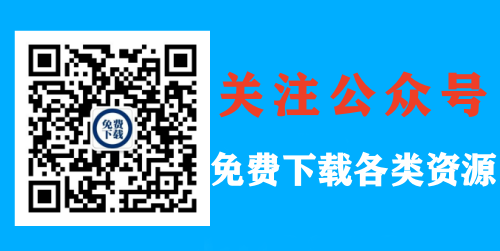Unit 2 Topic 3 Section A 教案
Ⅰ. Teaching aims and demands
1. Learn some new words:
bee, several, waste, stream, breathe, influence
2. Learn the environment in the past and at present.
(1) It's a beautiful place with flowers and grass.
(2) The water is so dirty. It smells terrible.
3. Learn about different kinds of pollution:
(1) Air pollution makes people sick.
(2) Light pollution is harmful to our eyes.
(3) Litter influences the look of our cities.
4. Learn"there be sb./ sth. doing sth."structure.
Ⅱ. Teaching aids
A tape recorder; a small blackboard some pictures.
Ⅲ. Teaching method:
Five-finger Teaching Plan
Step 1 Review
Review Topic 2:
T: We talked about the harm of pollution in the last topic. And we know there are many kinds of pollution, such as water pollution, air pollution, light pollution, litter and so on. How do they affect our environment? Example:
S1: Water pollution makes some animals dead. S2: Water pollution makes some plants dead.
S3: People and animals can't drink the water. S4: Air pollution causes the greenhouse effect.
S5: Air pollution makes people sick and even causes cancer. S6: Air pollution destroys the ozone layer. …
T: Yes, you are right. You know, all kinds of pollution are polluting our environment. So we are facing the serious pollution problems. What should we do to improve our environment?
Group 1: Don't spit everywhere. Don't pick the flowers. Plant more trees. …
Group 2: Ask the government to make rules and pull down some chemical factories.
Ask people to use electricity. …
T: Very good! You have so many good ideas to improve our environment. Would you like to do something useful to improve our environment? Ss: Yes, of course.
T: Let's be greener people together. Today, we'll learn Topic 3. Would you like to be a greener person?
Would you like to be a greener person?
Step 2 Presentation
1. T: If we want to be greener people, what should we do at home? Let's look at the picture. What are they?
Ss: They are plastic bags.
T: Yes. But we should use plastic bags as few as possible. In another way, We should reduce them.
T: We can use bags like these. We can use them again and again. That is to say, we can reuse them instead of throwing them away. T: What are they in the picture?
T: They are cans. They are soft drink ca
ns. Should we throw them away after we drink? Ss: No.
T: You're right. we should collect them for recycling.
the three Rs-reduce, reuse and recycle
T: Now, we know, we should reduce, reuse and recycle some things at home to protect our environment. We call the three Rs-reduce, reuse and recycle.
be supposed to do sth.
T: Everyone should protect our environment. It's our duty to do it. That is to say, Everyone is supposed to do it.
2. T: Now we know how to protect the environment at home. What can we do at school to protect the environment? Please listen to the tape, then find out the answer.
3. T: Please listen to the tape again, try to answer the questions on the small blackboard.
1. Who is working for an organization that protects the environment? 2. What's Kelly's job?
3. Should we use both sides of paper? 4. Why is the recycling useful?
4. T: Please fill in the blanks according to 1a.
Step 3 Consolidation
1. T: Please read the dialog after the tape.
2. T: Please work in pairs, you and your deskmate play different roles to practice 1a. After a while, I'll ask some groups to act it out.
3. T: Now, I'll ask some students to retell 1a. Please try to speak in your own words.
For example:
S1: I'm Kelly and studying at Ren'ai International School. In my spare time, I am working for an organization that protects the environment …
Step 4 Practice
1. T: Please listen to the tape carefully; you'll hear four people talking about recycling items, and finish 2.
1.We should use plastic bags as few as possible.
2.We should throw the rubbish in the river.
3.We should reduce the waste we produce.
4.We should use both sides of paper.
5.We should throw the plastic bags rather than reuse them.
2.
T: Look at the five sentences. If you think the statement of the sentence is good for our environment, you nod your head, and it means agreement, or you should shake your head, it means disagreement.
nod, agreement, disagreement
1. You nod your head, and it means agreement.
2. You nod your head, or you should shake your head.
3. Water is important to people, but some of them don't save it.
4. Some people protect animals while others kill animals.
T: Let's look at the sentences. Pay attention to the words underline, what's the usage of them? What's the relation of the two sentences in each sentence?
1. 并列句的定义
2. 并列句的用法
;
(1)表示并列关系,用and……
(2)表转折,用but, while……
(3)表选择,用or……
3. T: Please join the sentences in 3 with "or, and, but or while" after the model.
Step 5 Project
1. Homework:
Write an article about the three Rs in your daily life.
Design:
Would you like to be a greener person?
Section A
1. You nod your head, and it means agreement.
2. Work hard, or you will fail the exam.
agreement disagreement 3. She was busy cooking while they were watching TV. 4. The earth is beautiful , but people hurt it now.
be supposed to do sth.
reduce
the three Rs- reuse
recycle

